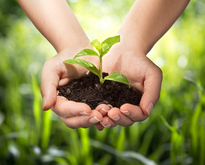Regional diversity in the EU is present in agricultural production methods, such as in the extent of organic farming. There is only one region where over one half of agricultural land is farmed with organic production methods, while 13% of the regions had less than 1% of their area under organic farming in 2016.
The total organic area is the sum of the ’area under conversion’ plus the ‘certified area’. Before an area can be certified as ‘organic’, it must undergo a conversion process, which may take 2-3 years depending on the crop.
The source dataset is accessible here.
The extent of organic farming varies considerably across EU regions. The highest share of organic farming was reported in the Salzburg region of Austria, where about one half (52%) of the total utilised agricultural area was used for organic farming in 2016 (the latest year for which regional data are available). There were a further seven regions where organic farming accounted for upwards of one quarter of total utilised agricultural area: Severozápad in Czechia (30%), Norra Mellansverige in Sweden (29%), Calabria in Italy (29%), Mellersta Norrland in Sweden (28%), Burgenland in Austria (27%), Sicilia in Italy (26%) and Moravskoslezsko in Czechia (25%).
The source dataset is accessible here.
Compared with 2013, the largest increase in share of organic farming was observed in Calabria in Italy and Salzburg in Austria (each +11 percentage points (pp)), closely followed by Sicilia in Italy and Région de Bruxelles-Capitale in Belgium (each +9 pp), as well as Åland in Finland (+8 pp).
This news is published on the occasion of 'World Food Day' (16 October).
For more information:
More statistics on organic areas at national level, including areas under conversion, organic production and the number of fully organic farms can be found in the Statistics Explained article Organic farming statistics.
To contact us, please visit our User Support page.
For press queries, please contact our Media Support.

